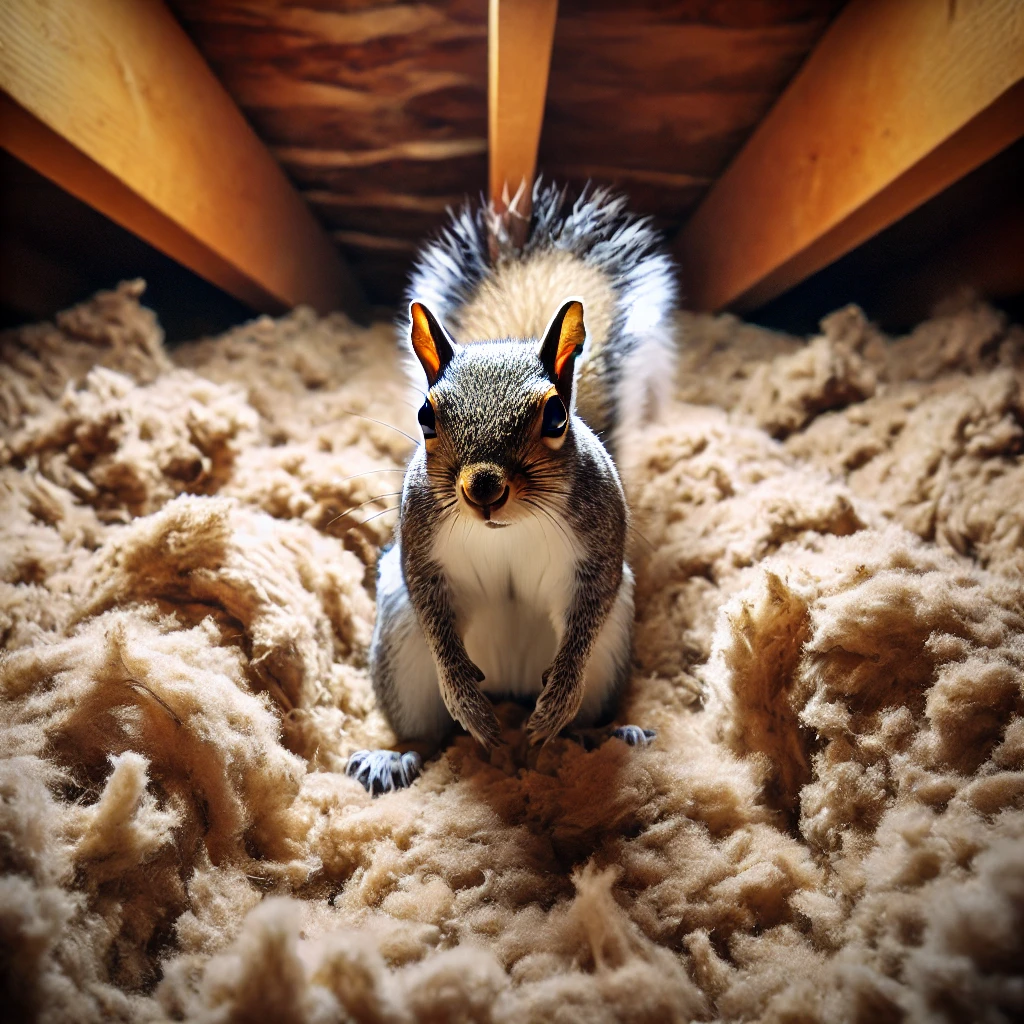As the temperatures drop, squirrels often look for warm, sheltered places to nest—unfortunately, attics are a perfectly ideal target for creatures such as squirrels, mice, bats, and more. At Cardinal Exteriors, we frequently see the damage squirrels can cause to roofs and siding. Our sister company, Adam’s Pest Control, is also familiar with the havoc these critters wreak once inside. Here’s how squirrels get into attics and how we can help you keep them out.
How Do Squirrels Get Into Your Attic?
Squirrels are persistent and agile, making it easy for them to find a way into your home. They can fit through holes as small as 1.5 inches and even if an entry point is initially too small for them to fit, they can chew it wider.
1. Damaged Roofs and Fascia
Squirrels are opportunistic and will exploit any weak spots in your roof or fascia. If shingles are missing or damaged, they can use that gap to squeeze in. Similarly, if the fascia (the board along the edge of your roof) is rotting or has openings, squirrels will chew through to create a larger hole.
2. Roof Vents and Gaps
Attic vents are designed to provide airflow, but they can also be an easy entry point for squirrels. Some roof vents may not have proper coverings or screens, allowing pests to crawl through. Similarly, any gap between your roof and siding can be a perfect entryway for a squirrel.
3. Chimneys
Chimneys are another popular entry point for squirrels. Without a proper cap or seal, squirrels can utilize chimneys to access your attic or home.
4. Soffit and Eave Openings
The soffit (the underside of your roof overhang) and eaves can provide enough space for squirrels to squeeze into your attic, especially if there are any gaps due to poor construction or damage. Squirrels are excellent chewers and can easily widen a small hole to make it suitable for entry.
5. Overhanging Trees
Squirrels are natural climbers and use nearby trees to access your roof. If you have overhanging branches close to your home, they serve as a direct route for squirrels to your attic.
What Damage Can Squirrels Cause?
Once inside your attic, squirrels can cause significant damage:
- Chewing on electrical wires – Squirrels’ constant gnawing can lead to fire hazards by exposing wires.
- Structural damage – They’ll chew through insulation, wood beams, and other materials in the attic.
- Nest-building – Squirrels may tear apart insulation or roofing materials to build nests, further compromising your attic’s integrity.
- Noise and health risks – Squirrels can create loud, disturbing noises and introduce pests like fleas, ticks, or even diseases into your home. Not to mention they also leave hundreds to thousands of small droppings in your attic.
How to Keep Squirrels Out
By choosing Cardinal Exteriors to prevent squirrels from entering your home, you’re partnering with the most capable team in the state. Thanks to our unique collaboration with our sister company, Adam’s Pest Control, you get the best of both worlds. Cardinal expertly repairs and fortifies your home to block future squirrel entries, while Adam’s handles the wildlife side with their specialized knowledge of squirrel behavior and removal. Unlike other companies, where you’d rely on a wildlife expert for home repairs or a contractor to manage pests, we combine both skill sets for a seamless and comprehensive solution.
If you need help preventing wildlife from your home or have any other home repairs or replacement we can help you with, you can contact us or follow us on social media!
Contact Us
Website: cardinalexteriors.com
Email: sales@cardinalexteriors.com
Phone: 952.445.8638
Social
Facebook: Facebook
Instagram: Instagram
X: X
LinkedIn: LinkedIn


